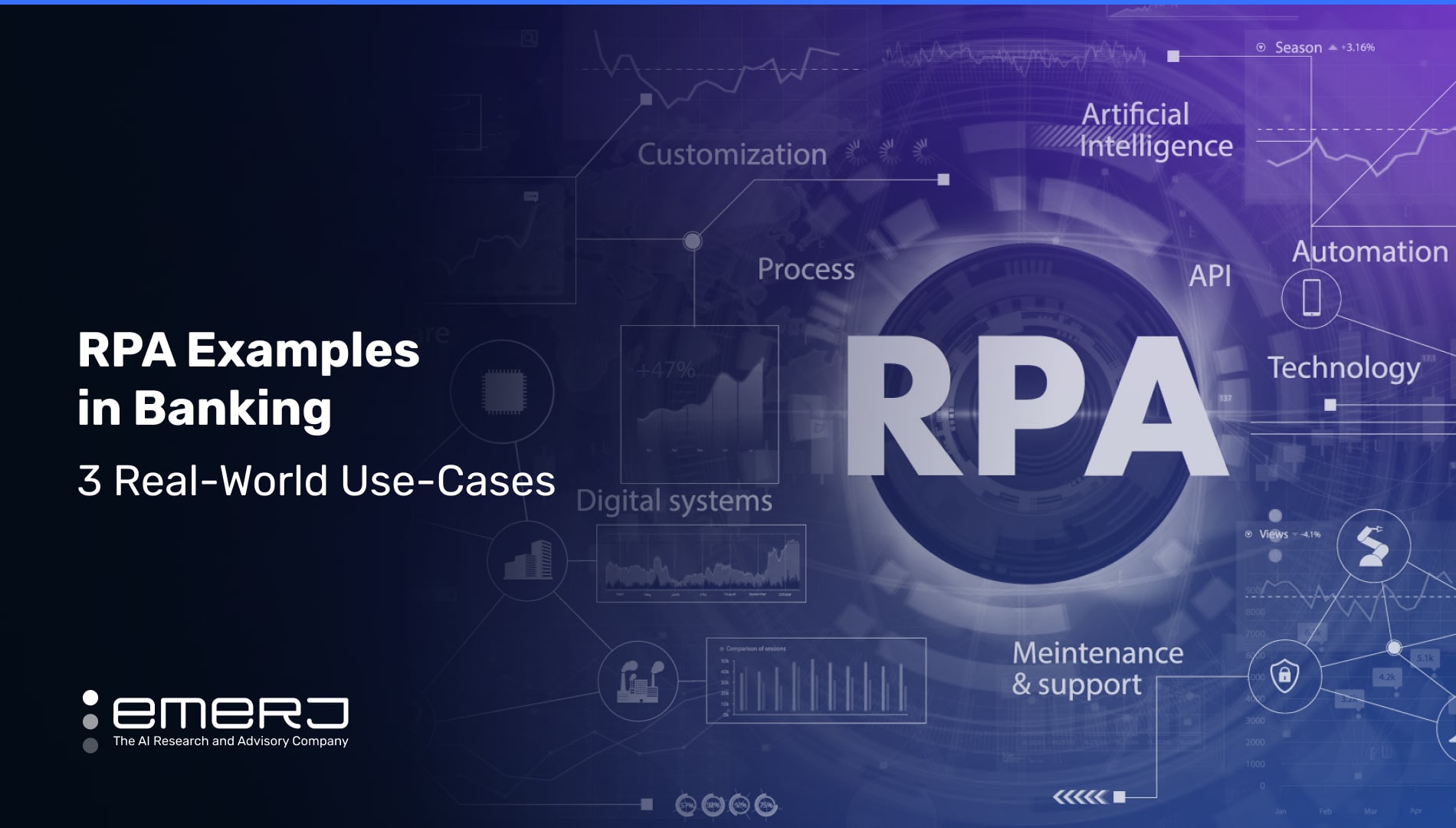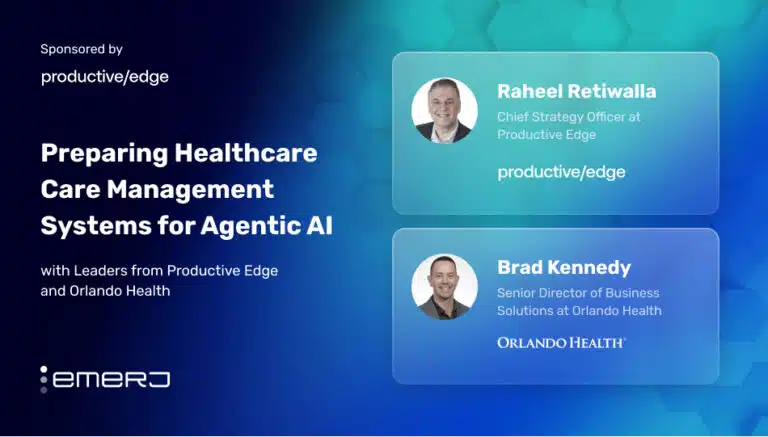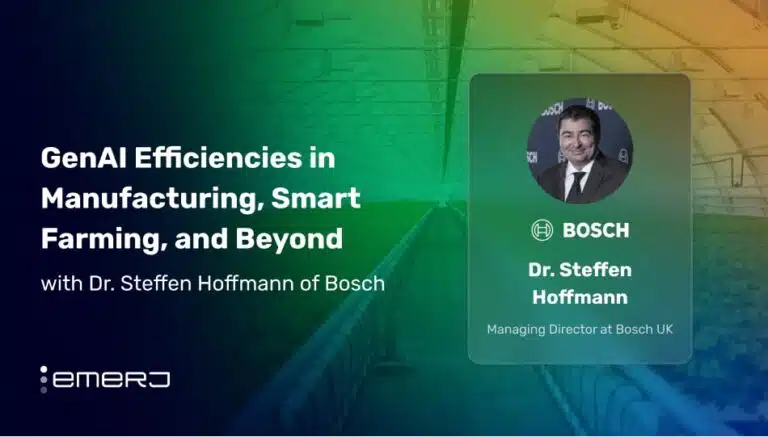Today, most robotic process automation (RPA) applications in banking consist of deterministic software tools that are not categorically considered artificial intelligence. For most use cases, RPA can be a trustworthy foundation to apply AI and drive even more efficiencies from the workflows they’re looking to streamline.
Comparatively, banks and other financial institutions (FIs) are generally more likely to attain an easier path to ROI with RPA than in implementing early AI projects. RPA does not require a new or high-performance technical infrastructure, unlike other advanced technologies.
Per various reputable sources, a tremendous potential business value exists for FIs with RPA. In one telling example, a KPMG report [PDF] states that, over the next 15 years, financial services firms will automate up to 45 to 75 percent of offshored jobs using RPA.
The report estimates a resultant cost savings of up to 75 percent. Even if your firm is not offshoring, there are still plenty of potential RPA-driven cost savings, mainly by reducing or eliminating redundant workflows, enhancing task efficiencies, and reallocating human capital.
Robotic Process Automation, or “RPA,” is the use of technical computer programs, or “robots” (“bots”), to capture, standardize and automate business processes. Most RPA programs are designed to automate processes that are repetitive and information-dense.
In this article, we present three successful RPA use cases and their implementation and execution:
- Automating credit applications: Ikano Bank automates credit application processing by extracting and cross-referencing application data with RPA to increase its credit customer base and reduce risk.
- Know Your Customer (KYC) compliance: Appian offers an intelligent automation platform that it claims helps financial service firms mitigate risk, navigate regulatory uncertainty, and improve customer experience by automating KYC compliance measures.
- Fraud claim automation: China Merchants Bank uses RPA to automate fraud reimbursement, resulting in increased claims processing accuracy, efficiency, and significant cost savings in claims processing.
We first examine how a Swedish multinational bank uses RPA to streamline document processing and automate credit applications to gain new customers.
Use Case #1: Automating Credit Applications
Ikano Bank is a Swedish retail bank with business operations in Austria, Finland, Germany, Poland, Russia, and the U.K. UiPath is an international software company that produces RPA software.
Per a case study published by UiPath, the bank was contending with “huge swathes” of documents and burdensome governance requirements that limited their options for resolving the problem.
The bank sought to automate many of these processes to improve customer experience and enhance employee morale. Ikano Bank also wanted to ensure compliance with industry rules and regulations.
Among the significant processes automated by Ikano Bank includes credit application processing. Before implementing RPA, applications were assessed manually by customer service agents.
Regarding the RPA workflow, the bot accepts the application from an API on the client’s site and then extracts and cross-references application information using RPA before delivering the credit decision. UiPath asserts that this process takes under 60 seconds.
The RPA is built in one of three UiPath Studio platforms using a low- or no-code automation drag-and-drop “canvas” for non-techies to create the solution. Per UiPath’s product documentation for its RPA solution, a simplified breakdown for a similar rudimentary workflow consists of the following:
- The user enters a file name for the new project and accesses the canvas (see figure 1.)
- The user selects an “activity,” the specific type of workflow to be automated, and corresponding input data label and dialogue (e.g., “Your Name” and “What is your name?”) and output (e.g., “username”).
- The user performs a test run.
- The program produces an “Activity Coverage” panel, which provides testing analytics and issues a “Passed” or “Failed” for each workflow element.
A six-minute video demonstrates the end-to-end process of creating a simple UiPath RPA program:
As a result of automating its credit applications, the bank has reportedly seen an increase of 50,000 new customers within the past 18 months. The case study cited earlier states that 150 processes have been automated at Ikano Bank, saving over 100,000 hours of manual work in 2021.
Use Case #2: Know Your Customer (KYC) Compliance
Appian is an enterprise software company headquartered in McLean, Virginia. The company specializes in cloud computing and offers low-code platform-as-a-service (PaaS) and software-as-a-service (SaaS) solutions.
Appian offers a low-code IA solution called Connected KYC that it claims can help financial service firms mitigate risk, navigate regulatory dynamics, and improve customer experience using RPA and AI.
Specifically, the company claims that its solution can:
- Significantly reduce false positives and unnecessary KYC investigations
- Streamline the data management of an investigation
- Reduce data exposure risk
In its e-book Powering Seamless KYC Operations with a Modern Low-Code Solution, Appian claims that most financial services firms are not prepared or equipped to surmount “the many challenges” KYC compliance presents. The company cites the $1.9 billion in anti-money laundering (AML) and KYC fines as evidence.
The optional integrations are central to the platform and provide some AI functions, e.g., intelligent document processing, that the company may need. The software integrates with the following applications:
- Companies House (UK): A UK government-owned entity that displays enterprise data. Example data includes:
- Company number and overview
- Financial records
- Information about key people (e.g., executives and officers)
- DocuSign: Provides electronic signature capture
- Dun & Bradstreet: Gathers the most up-to-date Ultimate Beneficial Owners (UBO) from the D&B ecosystem
- Intelligent Document Processing (IDP): Appian’s low-code solution automatically classifies document types – claims, purchase orders, invoices, etc. – and extracts data fields. Data extracted may include the following:
- Invoice ID
- Date
- Amount
- Bill To
- Due Date
- Unit Price
- NorthRow: Provides customer risk score and alerts generated by Northrow customer profiles. Users manually set the medium- and high-risk thresholds.
- OFAC: Provides customer identity verification by cross-referencing the name against screening lists of the US Departments of Commerce, State, and Treasury
According to the product documentation, the Connected KYC ‘Home’ screen is used to:
- Complete compliance tasks
- Track investigations
- Identify potential problems
An Active Alerts section displays compliance alerts and associated risk scores for a customer:.
The KYC ‘Active Investigations’ screen filters the investigations assigned to the user:
A screenshot of the Connected KYC ‘Active Investigations’ Section. (Source: Appian)
The following one-minute-46-second-long video shows Appian’s value proposition and a brief demonstration of the Connected KYC solution:
Regarding business outcomes, little public information is available. The only results Emerj researchers could uncover were in the form of an Appian announcement.
That press release describes an iteration of its KYC solution as part of a digital onboarding process. It further states that Appian’s platform was able “to gather documents, verify accounts, and conduct customer due diligence for risk management.” for Bankhaus von der Heydt, an owner-managed private German bank.
The company claims implementing the new Connected KYC workflow reduces partner onboarding time from one week to under ten minutes.
Use Case #3: Fraud Prevention
EdgeVerve is a technology company that offers cloud-based software applications for banking and other sectors. The company is a wholly-owned subsidiary of Infosys.
The company offers a solution called AssistEdge RPA that it claims can help banks discover process inefficiencies, streamline workflows, reduce expenditures, and optimize operations using intelligent automation.
According to a blog post on the EdgeVerve website, a “147-year-old Fortune 500” bank was experiencing increasing numbers of fraudulent transactions. Subsequently, the bank felt compelled to reimburse claimants without recovering illegitimate funds.
Unfortunately, EdgeVerve does not share any details regarding the particular methodology for this use case. However, we can make some assumptions based on how we know the product works according to the product website and demonstration video.
The workflow likely resembled the following:
- The platform captures and analyzes the human-system interactions of workers tasked with processing fraud claims.
- Algorithms are applied to captured user data, and the platform generates a process map of the agent’s workflow (see figure 1). Data includes user inputs and actions, platform outputs, and duration.
- Algorithms produce process optimization and standardization indicators (e.g., agent variation in [a] number of steps taken and [b] task duration), which are presented as box and whisker plots to show variation. (see figure 3).
- Project managers are provided with metric data from the process map via a dashboard (see figure 2), enabling a more granular understanding of the fraud claims workflows. Metrics include:
- Number of users
- Process variations (the various ways users executed the task)
- Average handle time (AHT)
- Application used
- Duration
- Copy/paste the percentage
- Click percentage
- Type percentage
- Easy of automation – High, Medium, Low
- A prioritization matrix displays the best candidates for automation (see figure 4). The matrix is separated into four quadrants, split along an x-axis (business value) and y-axis (feasibility).
The following three-minute video demonstrates the platform functionality and end-user workflow:
Regarding business results, EdgeVerve purports that its solution delivered the following for the Fortune 500 bank:
- An 800% increase in productivity (no details on how this was measured).
- 37,000 transactions processed.
- $500,000 saved in 6 months.
EdgeVerve also claims that with their AssistEdge RPA-powered solution, the client was able to:
- Automate processes for receiving and addressing debit card fraud claims.
- Correctly detect fraudulent charges.
- Maintain detailed audit trails for settlements.
- Update the client’s internal system promptly.
- Provide detailed alerts for clients in the event of failed or defaulted transactions.


















